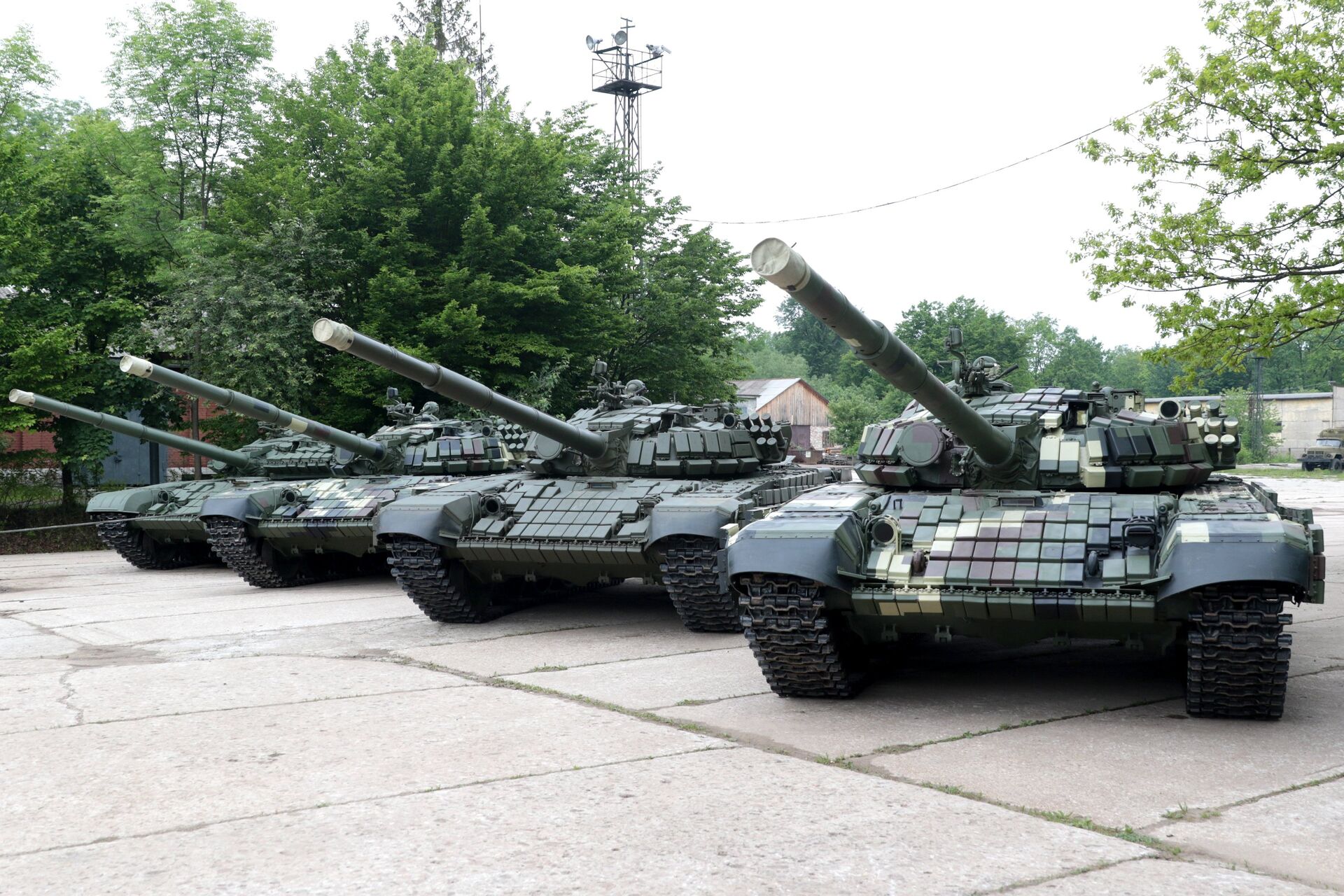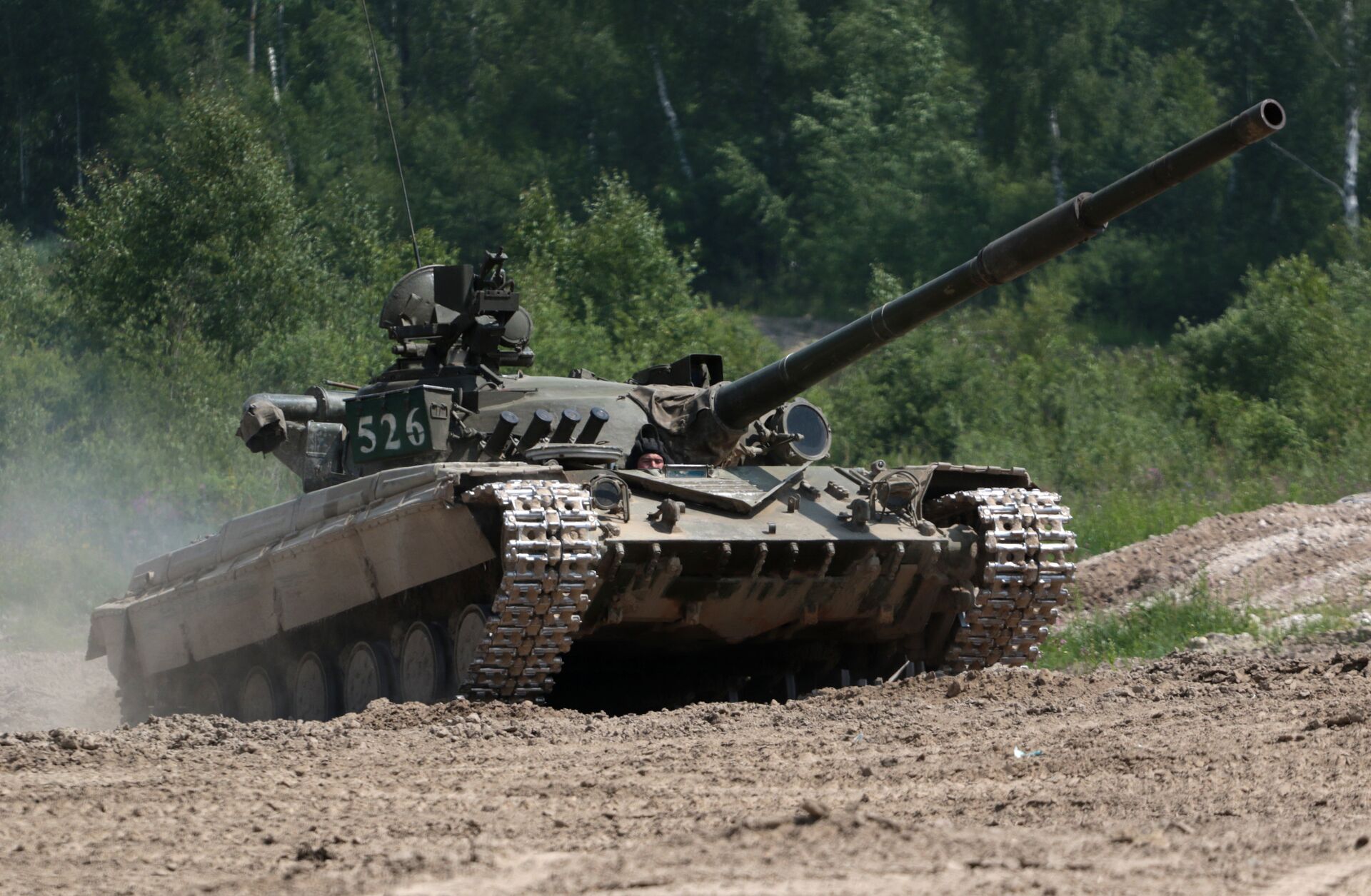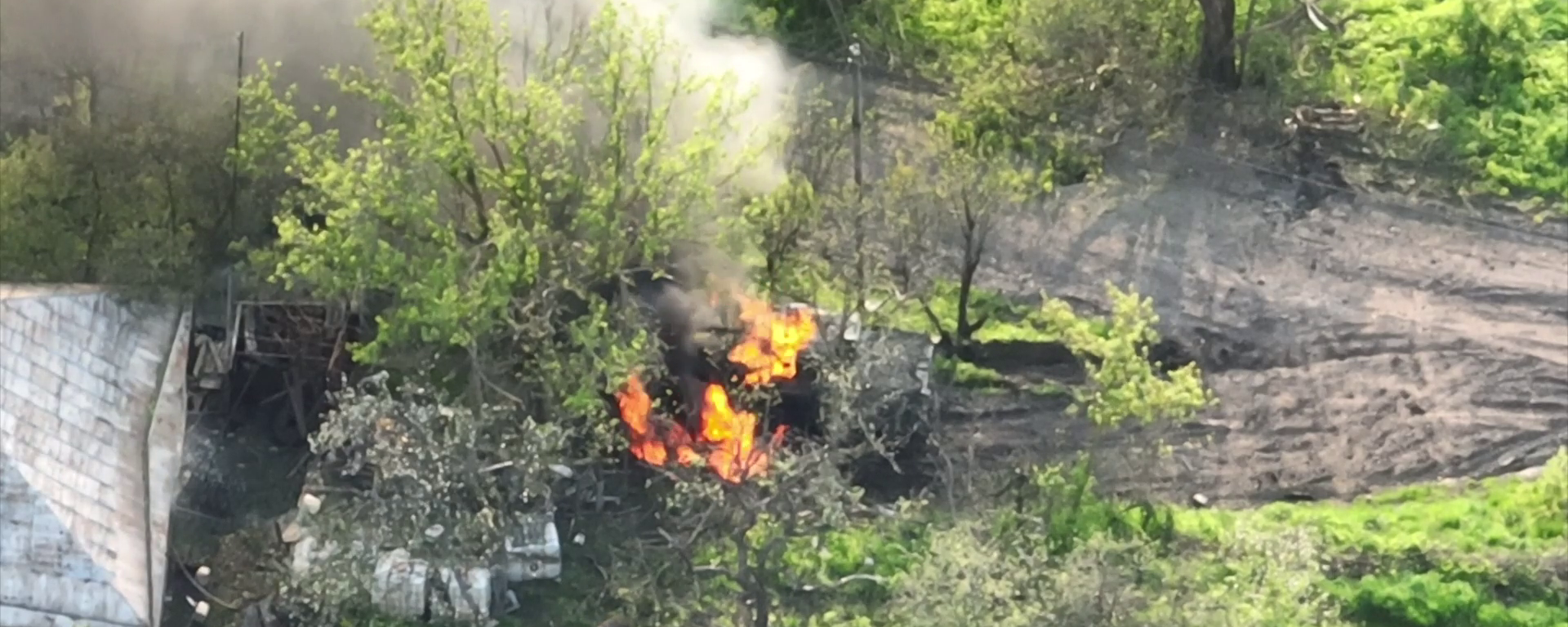What Types of Tanks Does Ukraine Have and How Many are Left?

© President of the Ukraine Press-Service
/ Subscribe
The NATO-Russia proxy war in Ukraine has demonstrated the folly of early 21st century predictions about tanks becoming obsolete in the conflicts of the future, with both sides flooding the battlefield with heavy armor. The conflict has also shattered a popular myth about the supposed superiority of NATO's expensive "high-tech" tanks.
Main battle tanks continue to make headlines in stories related to the conflict in Ukraine, with reports focusing on upgrades, tank-on-tank firefights and efforts to ramp up heavy armor deliveries to the front.
What Types of Tanks Did Ukraine Have Before 2022?
In the immediate aftermath of the USSR’s collapse in 1991, Ukraine found itself with one of the largest tank fleets in the world, with its arsenal consisting of about 8,700 tanks, 11,000 armored and infantry fighting vehicles, 18,000 pieces of artillery and 2,800 aircraft and helicopters. In the years and decades that followed, much of this arsenal was sold off to other countries, melted down for steel or scrapped, partly to survive the economic depression the country was thrust into, and partly to meet the terms of the Treaty on the Limitation of Conventional Arms in Europe.
Independent Ukraine also inherited the legendary Kharkov Locomotive Factory and the Kharkov Machine Building Design Bureau, which developed and produced some of the 20th century’s best-known tanks, including the T-34, the T-64, the T-80 and the T-84. Production dropped from hundreds of tanks per year in the 1980s to just dozens a year in the 1990s, 2000s and 2010s, with the factory’s 60,000-person workforce shrinking to about 5,000 by 2015.
Before 2022, Ukraine’s tank fleet consisted mostly of upgraded variants of the T-64, including the T-64BM ‘Bulat’, in service since 2004, and the T-64BV, in service since 1984 (with part of the fleet upgraded in 2017). According to estimates from the International Institute of Strategic Studies, Kiev had about 720 T-64s of various modifications in its arsenal in 2022, plus nearly 580 in storage.
Ukraine also had a stock of about 200 mothballed T-80s, and about a dozen MBTs of its T-84 Oplot variant –which entered service in the early 2000s and constitutes the latest word in Ukrainian tank technology.
Ukraine’s stock of tanks also includes about half-a-dozen variants of the T-72, the 1970s-era Soviet tank created as a result of the then-friendly rivalry between the Kharkov Locomotive Factory and the Uralvagonzavod Design Bureau in Nizhny Tagil, Russia. Ukraine is estimated to have nearly 750 of the tanks, (500 in storage). Modifications of the T-72 in service with the Ukrainian military include its base model, as well as the T-72A, the T-72AB/B1, and the T-72AMT, with modernization including the incorporation of things like new communications systems and composite armor designed to cushion the blow of enemy shells.

T 72 and T-64 tanks are on display in the Lvov Armor Repair Plant, file photo.
© Sputnik / Stringer
/ What Types of Tanks Has Ukraine Received From NATO?
The escalation of the long-burning Donbass conflict into a full-blown NATO-Russia proxy war in Ukraine in 2022 prompted the US and its NATO allies to dramatically ramp up military support for Kiev, with billions of dollars in military support sent before February 2022 soon turning to tens of billions. In the conflict’s early days, the Western bloc stuck to a strategy of sending Kiev tanks belonging mostly to NATO's former Warsaw Pact members. NATO officials said this was being done because of Ukrainians' wealth of experience operating Soviet-made weapons, and not out of their desire to clear out inventories of aging mothballed tanks.
These early deliveries included
An undisclosed number of T-72M1s from Bulgaria,
over 170 T-72s of various modifications from the Czech Republic,
31 T-72A tanks from North Macedonia,
over 250 modernized T-72s and 60 PT-91 Twardy tanks from Poland (the Twardy is a modification of the T-72M1 developed in the mid-1990s),
and 28 M-55S tanks from Slovenia (the M-55S is a modification of the Soviet T-55 tank, whose production began all the way back in 1948).
Gradually, as fighting escalated, and Kiev prepared for its summer counteroffensive, NATO agreed to send German, British and US-made heavy armor to Ukraine, despite warnings from President Biden in March of 2022 that doing so might result in "World War III."
Among the Western battle tanks sent to Ukraine are
Modernized variants of the Leopard 1, the West German main battle tank created in the 1960s and produced until 1984, with Germany, Denmark, and the Netherlands pitching in to send as many as 178 of them to Kiev.
Dozens of Leopard 2s, the Leopard 1’s successor, produced through the 1980s and receiving a variety of upgrades in armor, communication systems, thermal sights, automated fire and explosion suppression systems, digital controls, and a new 120 mm smoothbore gun by Rheinmetall. Leopard 2s have been promised or delivered by Canada (8 tanks), Denmark (7, to be delivered in 2024) Finland (6 mine-clearing variant Leopard 2s), Germany (18 Leopard 2A6s), the Netherlands (14), Norway (8), Poland (14), Portugal (3), Spain (10), and Sweden (10 of its Strv 122 improved Leopard 2A5s variant).
14 Challenger 2s pledged by Britain, and spotted on the battlefield for the first time last month.
31 M1 Abrams, committed by the United States in the spring to help convince NATO’s European members to send Leopards, but which won’t be delivered until at least the fall of 2023, presumably because they haven’t been built yet. (It’s not clear why the US couldn’t just take a few dozen tanks from its vast arsenal of 6,200+ active duty and stored Abrams).

A Challenger 2 main battle tank (MBT) is pictured during a live firing exercise in Grafenwöhr, Germany
© Wikipedia / UK Ministry of Defence
What Tanks Does Ukraine Want From NATO?
Although Ukraine had a tank force of over 2,250 MBTs before the escalation in 2022, received about 480 Warsaw Pact-built MBTs and nearly 300 modern Western MBTs, Kiev continues to push for more armor to throw into the meat grinder of its stalled counteroffensive against Russia.
"The Ukrainian army desperately needs more Western battle tanks, infantry fighting vehicles and other armored vehicles," controversial former Ukrainian ambassador to Germany Andriy Melnyk said in mid-June. "Each Leopard 2 is literally worth its weight in gold for a decisive offensive," he added.

Leopard 2 tank damaged during training by Ukrainian forces in western Poland.
© Photo : Twitter / @clashreport
How Many Tanks Has Ukraine Lost, and How are Left?
Ukraine’s Armed Forces does not publish figures on their losses. The Russian military, which regularly publishes estimates on Ukraine’s losses, reported Saturday that Russian forces have destroyed a total of 10,430 Ukrainian tanks and other armored vehicles, such as APCs and IFVs, in a year-and-a-half of fighting. Western tanks began appearing among these figures after Ukraine kicked off its counteroffensive on June 4, with Leopard 1s, Leopard 2s, Bradley IFVs and other Western heavy weapons featured in photos and videos from the front, some destroyed, some taken intact as trophies. Earlier this week, President Putin stated that Ukraine had lost as many as 259 tanks and 780 armored vehicles to date since the start of its counteroffensive, among them the latest Western armor.
The loss of Western equipment – coming after decades of fierce debate among war nerds about the supposed superiority of NATO armor to Russian and Warsaw Pact armor, proves what Sputnik has been saying since January, when plans to deliver Western MBTs to Ukraine were first announced: that as with any modern weapon, the real-world performance of any tank will depend on an array of factors, including artillery, ATGM and aerial support, strategic and tactical battlefield intelligence, commander competence, and the skill of tank crews.
How Many Tanks Has Russia Lost, and How Many Does It Have Left?
The Russian military has not publicized its tank losses, freeing Kiev to make fantastical claims about losses of "over 4,000" pieces of armor (i.e. more than Russia’s entire estimated operational tank fleet of 2,600 MBTs in 2021). Other estimates put the figure closer to 2,000 lost tanks.
The true numbers are likely to be compiled and published by historians, long after the conflict has ended. For what it’s worth, in mid-June, Putin revealed that Russia had lost 54 tanks during the first two weeks of Kiev’s counteroffensive, with Ukraine said to have lost 160 tanks and over 360 other armored vehicles during the same period. Some of the lost Russian tanks "can be repaired and brought back to operation," Putin said, adding that Russia's overall losses were "10 times" below Kiev's, and that the enemy had failed to break through along any section of the front. President Zelensky of Ukraine has since admitted that the counteroffensive is going "slower than desired," and US officials have anonymously admitted to media that the operation is "not meeting expectations on any front."





